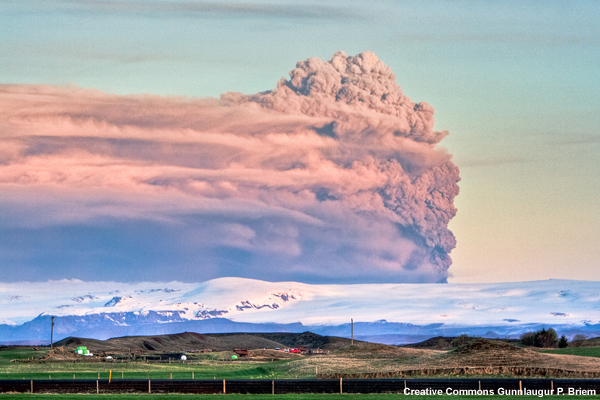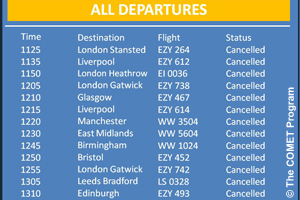Introduction » Eyjafjallajökull Volcano (2010)

The 2010 eruption of Eyjafjallajökull (pronounced AY-yah-fyat-lah-YO-kutl) was a series of volcanic events that, although relatively small, caused an enormous disruption of air travel across western and northern Europe.
A period of high seismic activity began in the vicinity of Eyjafjallajokull glacier during the later part of 2009. The activity continued to intensify and on the evening of 20 March 2010, a fissure eruption began with lava jets fountaining upwards of 330 ft (~100 m). Though lava was limited to the immediate vicinity, some volcanic ash fell within a mile or so west of the eruption site. The sequence of eruption tremors and venting continued for the next three weeks.
Shortly after midnight on 14 April, an eruption from a new vent under Eyjafjallajökull's ice-filled crater discharged volcanic ash to 20,000 ft (~6000 m). For the next five days, Eyjafjallajokull continued to erupt and expel ash from 15,000 to 30,000 ft (~4500 to 9000 m).

During the time of the eruption a deep low pressure system south of Iceland steered the volcanic ash southward and eastward toward the European continent. The resulting ash cloud and its projected path disrupted air travel to, from, and within Europe and cost nearly $4.7 billion (US) in lost gross domestic product (GDP) worldwide.
- Lost GDP:
- $2.6 billion for Europe
- $957 million to the Americas
- $591 million to the Middle East and Africa
- $517 million to Asia
- 2.4 percent drop in worldwide passenger demand for air travel
Eruptions continued into mid-May increasing the total loss in worldwide GDP by another 5% to over $5 billion.
